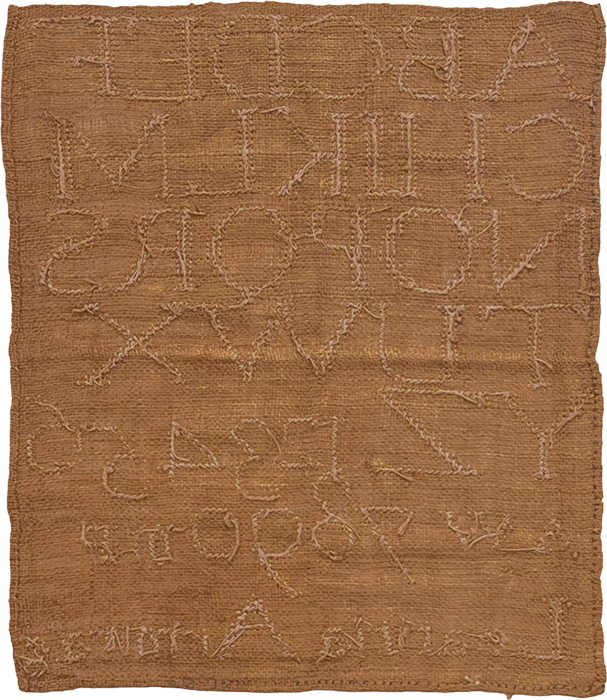Leatitia Armitag
Solebury, Bucks County,
Pennsylvania, circa 1830

An unusually subtle Quaker marking sampler, this was made by Leatitia Armitag who was born in 1820, the daughter of Henry and Sarah (Walton) Armitag (a variation of the surname is Armitage). A photo taken of the back of the sampler prior to conservation mounting confirms that the palette of ivory letters and numbers stitched onto tan linen is precisely as the sampler was made. The handsome Roman block letter font was taught to samplermakers at Friends schools in England and the United States and is one the hallmarks of Quaker samplers.
Leatitia was the 4th of 8 children; her father was an elder of the Solebury Friends Meeting for much of his adult life. The Armitag immigrant ancestor was a Quaker, Samuel Armitage (1716-1801), who was born in Pontefract, Yorkshire, England. He was a weaver and schoolteacher who settled in Bucks County after his arrival in Pennsylvania, circa 1739. In 1748, he built a mill on the Cuttlelossa Creek that remained in the family for many generations and was long considered one of the significant historic mills in Pennsylvania.
Leatitia’s mother, Sarah Walton (1786-1869), was a 6th generation descendant of William Walton (1629-1681). The history of this family is documented in Byberry Waltons: An Account of Four English Brothers Nathaniel & Thomas & Daniel & William Walton Who Settled About 1683 in Byberry Township, Philadelphia County, Pennsylvania, by Norman Walton Swayne (Philadelphia, 1958). Photocopies from this source and others are included in the substantial research file that accompanies this sampler.
The sampler was most likely made under the instruction of a Quaker teacher associated with the Solebury Meeting. Along with the carefully spaced alphabet and numerical progression, two sets initials, AW and MP, are included on the sampler; these may be those of classmates or teachers.
Leatitita remained single and died in 1881. She is buried in Solebury Friends Graveyard.
The sampler was worked in silk on linen and is in excellent condition. It has been conservation mounted and is in a molded and black painted frame.

photo of reverse
